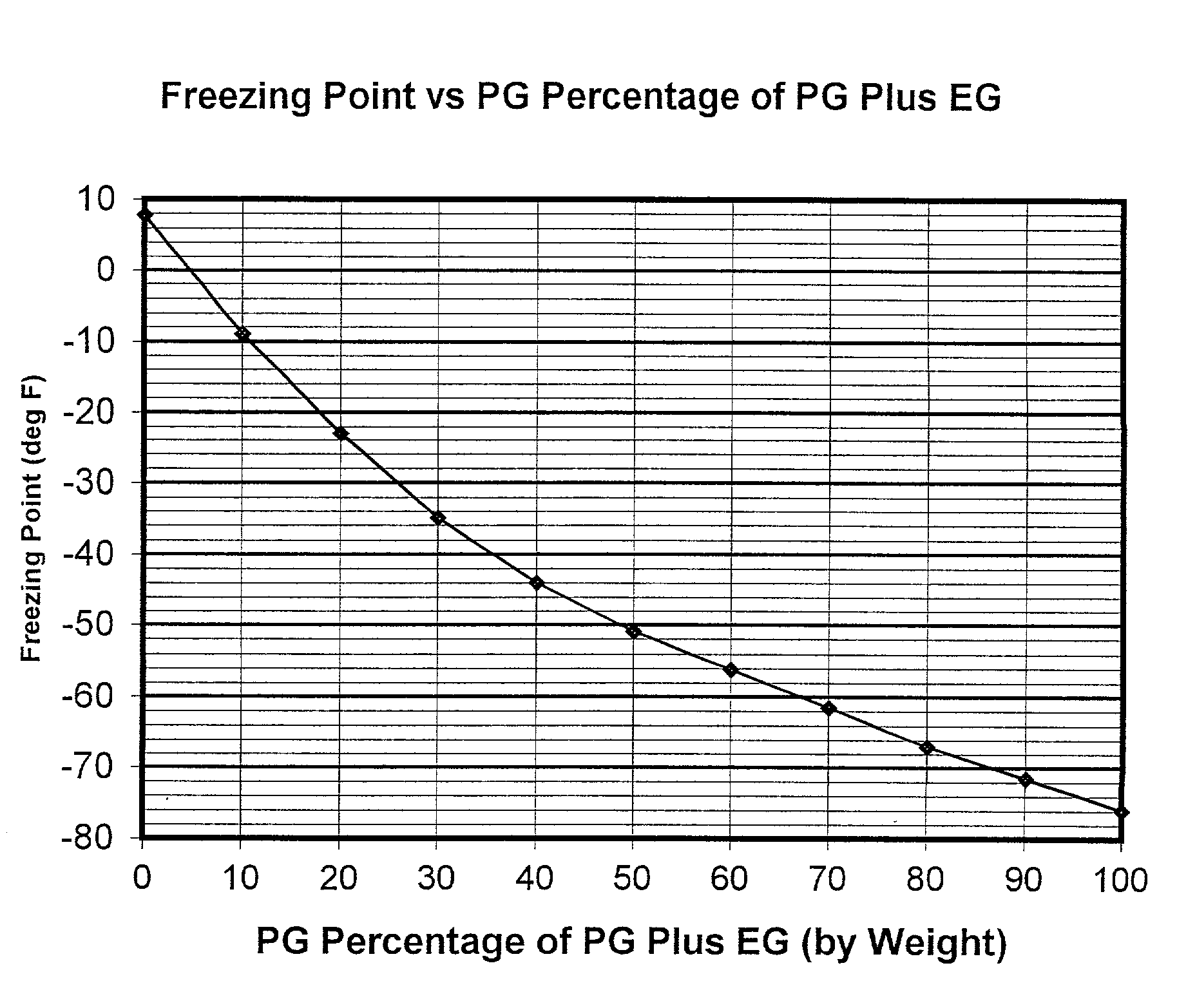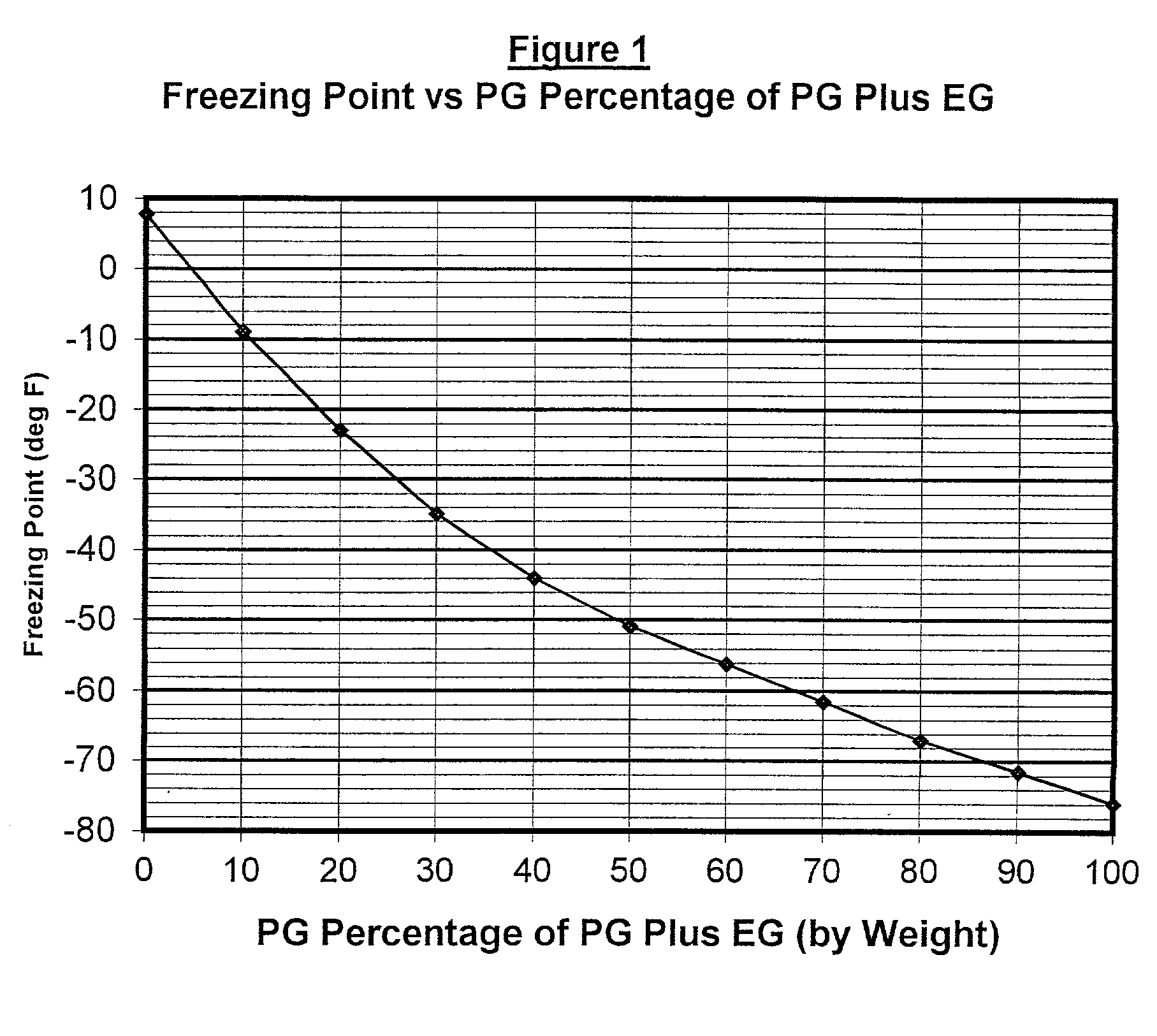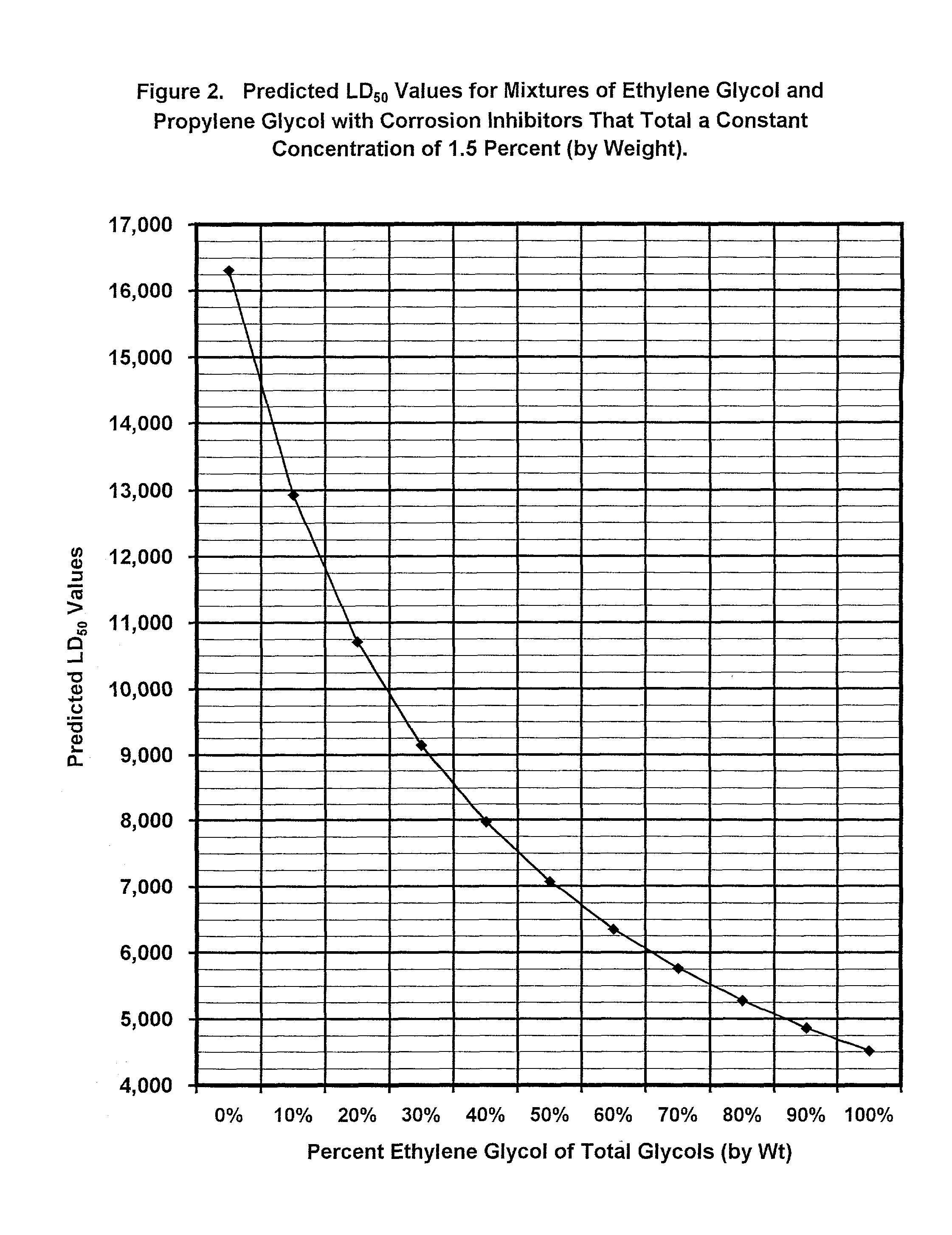Non-aqueous heat transfer fluid and use thereof
a heat transfer fluid and non-aqueous technology, applied in the direction of lighting and heating apparatus, corrosion prevention, chemical equipment and processes, etc., can solve the problems of adverse health effects of heat transfer fluid exposure, contamination of the environment, and human and other mammals' health hazards, so as to reduce the stress on engine system components, reduce the loss of coolant to the environment, and reduce overheating.
- Summary
- Abstract
- Description
- Claims
- Application Information
AI Technical Summary
Benefits of technology
Problems solved by technology
Method used
Image
Examples
example 1
[0095]This corrosion test was performed using the test procedure set forth in ASTM #D-1384 (Modified). Six specimens, typical of metals present in an engine coolant system, were totally immersed in the test coolants contained in glassware. Coolant “A” was a non-aqueous heat transfer fluid of the present invention in which the polyhydric alcohol portion was 100 percent PG. Coolant “B” was a conventional engine coolant formulation comprised of an EG based antifreeze concentrate mixed with water.
[0096]In the ASTM test procedure, the coolant is aerated by bubbling air up through the glassware, and maintained at a test temperature of 190° F. (88° C.) for 336 hours. This procedure was modified to more accurately reflect the conditions that would be experienced by the metals in an engine coolant system in use. The tests were conducted at a control temperature of 215° F. (101.6° C.) to simulate severe duty use. Coolant “A” was tested without aeration being applied in order to more closely a...
example 2
[0102]This corrosion test was conducted to determine the amount of corrosion of cast aluminum or magnesium alloys in engine coolants under heat rejecting conditions. A cast aluminum alloy specimen, typical of that used for engine cylinder heads or blocks, was exposed to test engine coolant solutions. Coolant “A” was a non-aqueous coolant of the present invention with 100 percent PG. To simulate the operating conditions of a coolant system using a non-aqueous coolant, the test using Coolant “A” was conducted at a temperature of 275° F. (135° C.) and a pressure of 2 psig (13.79 kPa), which is slightly above ambient pressure. Test Coolant “B” contained an ASTM prescribed corrosive water used to make up the water fraction of a 50 / 50 EG / water coolant. The test conditions for Coolant B, which simulate the conditions in an aqueous coolant engine cooling system, were a temperature of 275° F. (135° C.) and a pressure of 28 psig (193 kPa).
[0103]In each test, a heat flux was established throug...
example 3
Field Test
[0105]A 3.8L V-6 engine was operated over the road for a test period of 55,000 miles (88,511.5 km). The engine cooling system in the vehicle was configured as described in U.S. Pat. No. 5,031,579. Coolant “A” was identical to the non-aqueous coolant described in Example 1 above. There was no draining or replacing of the coolant during the test period. A metal specimen bundle was placed within the full flow of the engine coolant stream (lower hose) and was kept submerged in the coolant at all times. Performance of the test coolant's ability to inhibit metal corrosion was evaluated by comparing the results in milligrams lost of the specimen at the end of the test period to ASTM test standards. The results were as follows:
[0106]
Δ WT (mg)METALCOOLANT “A”ASTM STD.Cast Iron−2.8−10Aluminum+0.2−30Steel−1.1−10Copper−1.3−10Solder−3.7−30Brass−0.9−10pH at start+7.1NApH at finish+6.9NA
Method of Manufacture
[0107]The non-aqueous heat transfer fluid of the present invention may be manufac...
PUM
| Property | Measurement | Unit |
|---|---|---|
| Fraction | aaaaa | aaaaa |
| Fraction | aaaaa | aaaaa |
| Percent by mass | aaaaa | aaaaa |
Abstract
Description
Claims
Application Information
 Login to View More
Login to View More - R&D
- Intellectual Property
- Life Sciences
- Materials
- Tech Scout
- Unparalleled Data Quality
- Higher Quality Content
- 60% Fewer Hallucinations
Browse by: Latest US Patents, China's latest patents, Technical Efficacy Thesaurus, Application Domain, Technology Topic, Popular Technical Reports.
© 2025 PatSnap. All rights reserved.Legal|Privacy policy|Modern Slavery Act Transparency Statement|Sitemap|About US| Contact US: help@patsnap.com



